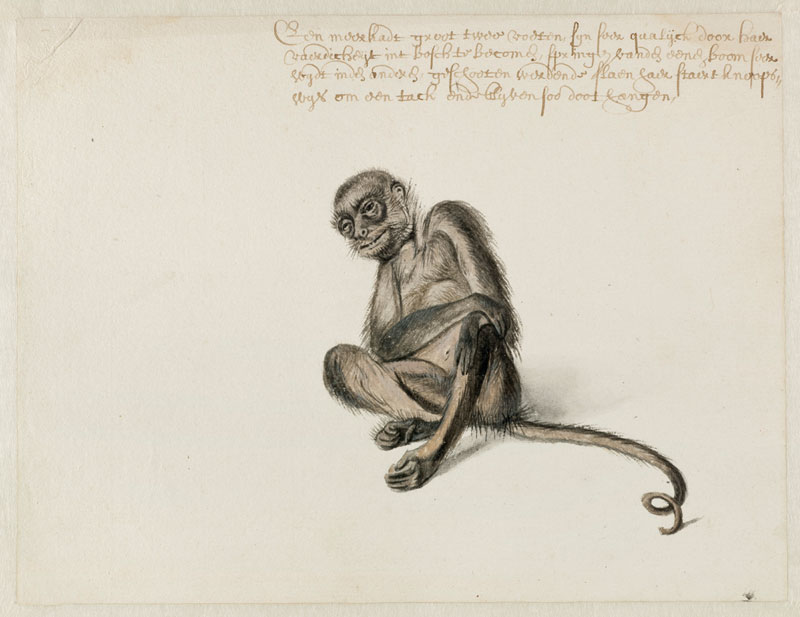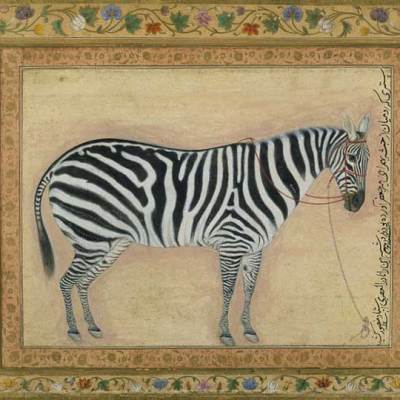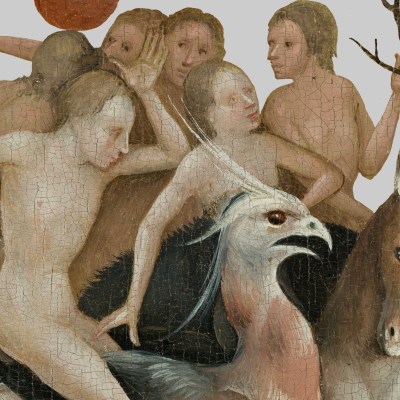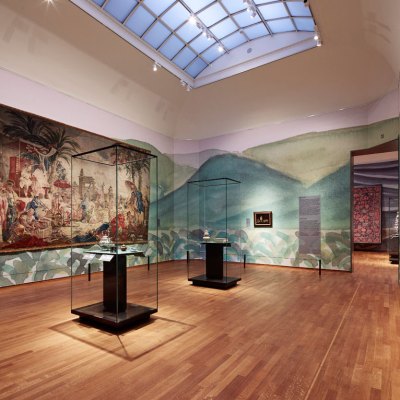In 1935 the British firm SS Cars Limited launched a new line of luxury automobiles called Jaguar. The name seemed to capture the alloy of speed, agility and power that would become the vehicles’ signature style. Jaguar is nowadays a watchword for British engineering flair, although the marquee, inconveniently, now belongs to an international conglomerate headquartered in Mumbai. As the engrossing Rijksmuseum exhibition ‘Frans Post: Animals in Brazil’ reminds us, however, there was never anything British in the first place about the member of the panthera genus from which the brand derived its name.
Frans Post’s poised watercolour and gouache study of a jaguar astride all fours is one of 34 illustrations of Brazilian animals recently discovered in the Noord-Hollands Archief in Haarlem. A native of that city, Post (1612–80) was 23 years old when in October 1636 he sailed out of the Marsdiep in a fleet of four Dutch ships bound for the Brazilian town of Recife. The fleet was commanded by Johan Maurits, Count of Nassau-Siegen, who had been hired by the West India Company as governor-general of a fledgling Dutch colony in the Brazilian province of Pernambuco, which had been seized from the Portuguese the previous decade. Johan Maurits’ motto was ‘Qua Patet Orbis’ (‘As wide as the world’s bounds’), and he showed every intention of putting it into effect, recruiting no fewer than 46 scientists, intellectuals and artists into his entourage. They included the physician Willem Piso, the astronomer and naturalist Georg Marcgraf and Post himself.
Little is known of Post’s early life and no examples of his work from before his voyage to Brazil have been identified. He almost certainly owed his place in the expedition to his brother Pieter Post, who designed the Mauritshuis, Johan Maurits’s exquisite palace in The Hague. Until the discovery of the batch of works on paper, Post was known only for his large oil paintings of Brazilian landscapes. These fall into two broad periods. A small number date from Post’s seven-year stay in Pernambuco. These are characterised by a simpler mode of composition and a more restrained palette, perhaps a result of Post’s difficulty in sourcing pigments in the New World. A larger quantity, more exuberant in character, were executed following his return to the Netherlands in 1644, when Johan Maurits was recalled from Brazil, to satisfy an appetite for exotica among the burghers of Amsterdam.
View of Olinda (1662), Frans Post. Rijksmuseum, Amsterdam

Although only a handful of Post’s landscape paintings are displayed here, the exhibition establishes, through impressive scholarship, their relationship to the works on paper. A case in point is Post’s drowsy View of the River São Francisco (1639), in which leaden sky and silvery watercourse almost merge and a capybara grazes nonchalantly on the riverbank. Two studies of the capybara occur in the Haarlem cache – one in graphite, the other in colour – in an almost identical pose. This painting is unique among the works Post completed in Brazil in displaying a native animal and suggests that the drawings were completed during Post’s first years in the country. Native fauna is much more abundant in the paintings Post produced for the Amsterdam market once back in Europe. His Brazilian Landscape with a Sugarmill from the 1660s contains no fewer than nine animals that can be matched to the studies, including a sloth, a cayman, two armadillos and a giant anteater.
Commercial considerations might have inspired the parade of animals in Post’s later paintings, but the original studies were not made for profit. At the time that they were completed, Post was in the personal service of Johan Maurits. What they reveal, far more incisively than Post’s landscapes, is the proximity of art and science in the governor-general’s vision. The drawings prove that Post encountered the animals not in the wild, but in the menagerie and taxidermy collection that Johan Maurits established at his palace in Recife, where he also created a botanical garden, an observatory and a meteorological station. Post’s style is intensely naturalistic, to the point of disclosing that many of the animals were either dead or in captivity when he drew them. A spider monkey sits with its head slumped to one side, its toes curled up and a grimace spread across its face. A peccary lies prostrate on the floor with its forelegs limp and its mouth ajar. The drawing in graphite of the capybara shows it wearing a rope collar, an accessory Post omitted when he introduced the animal into his painting of the River São Francisco. In his later canvases, he found imaginative ways of employing these sometimes stilted images: the white-eared opossum of Post’s drawing, stiff with rigor mortis, reappears in his Sugar Mill of around 1660 in the mouth of a boa constrictor.
Spider Monkey (n.d.), Frans Post. Noord-Hollands Archief, Haarlem

The annotations that accompany many of Post’s drawings provide further evidence of their scientific motivation. The armadillo is described as an ‘armored pig, one and a half feet in size without its tail, good to eat, tastes like chicken’. The neon flying squid is likened to a catfish and ‘gives good ink’. The moustached guenon is identified as an Angolan import, ‘very angry and malicious’. Quaint they may be, but these glosses situate Brazilian fauna within a global zoological framework, while also offering guidance as to the utility of these unfamiliar animals. It is possible that the studies were intended for inclusion in an encyclopaedia of Brazil, though none of them ever found their way into a work of this sort. Several, however, were incorporated as decorative motifs into Marcgraf’s map of Pernambuco, which was printed in the Netherlands in 1647.
Johan Maurits’s departure from Brazil, ‘that beautiful country […] which has no parallel under the heavens’, as he later wrote, marked the end of Post’s sojourn in the Americas. The last 36 years of his life were spent recreating on a grand scale this outlandish world for a curious Dutch public. This superb exhibition, replete with mounted animals of the kind Post drew, displays the artist not as a mere ornamentalist but as a true draughtsman-naturalist.
‘Frans Post: Animals in Brazil’ is at the Rijksmuseum, Amsterdam, until 8 January 2017.
From the November issue of Apollo: Preview and subscribe here.



